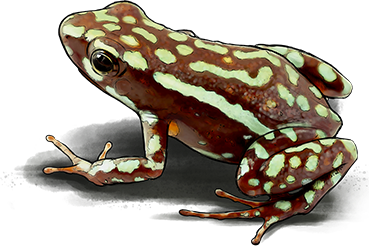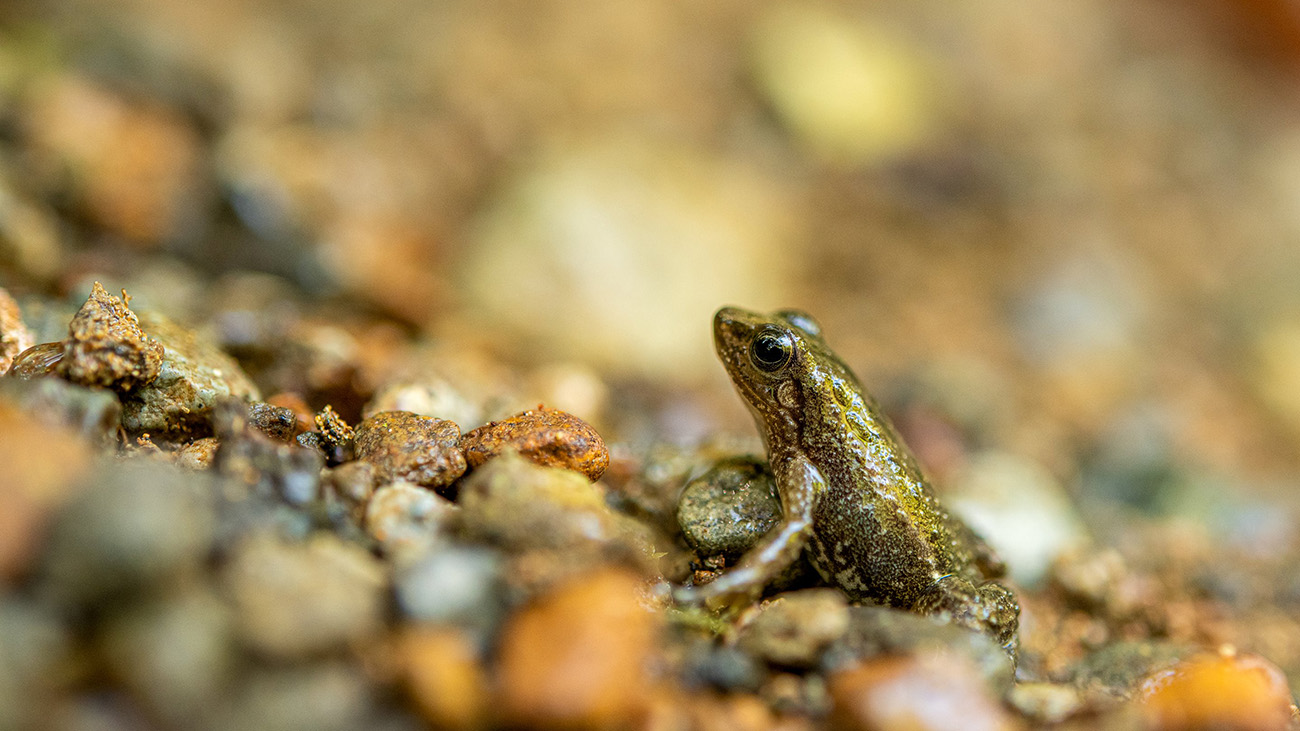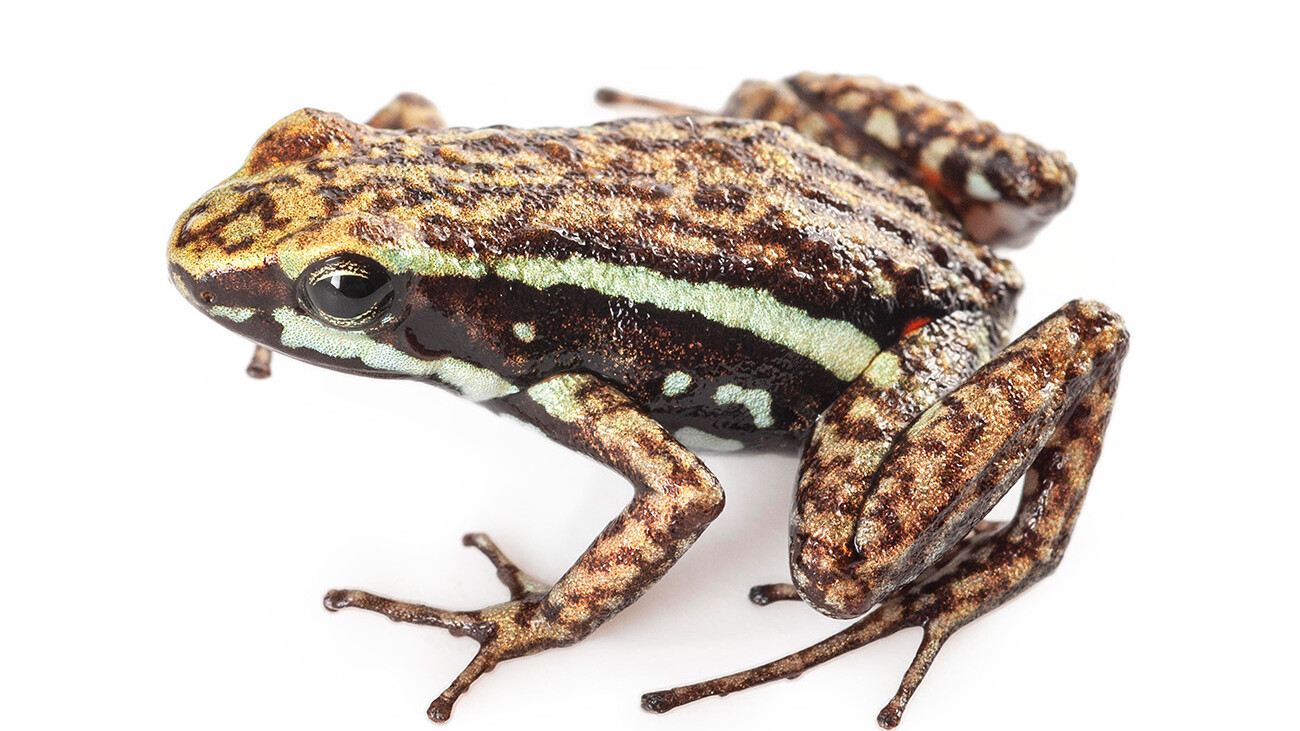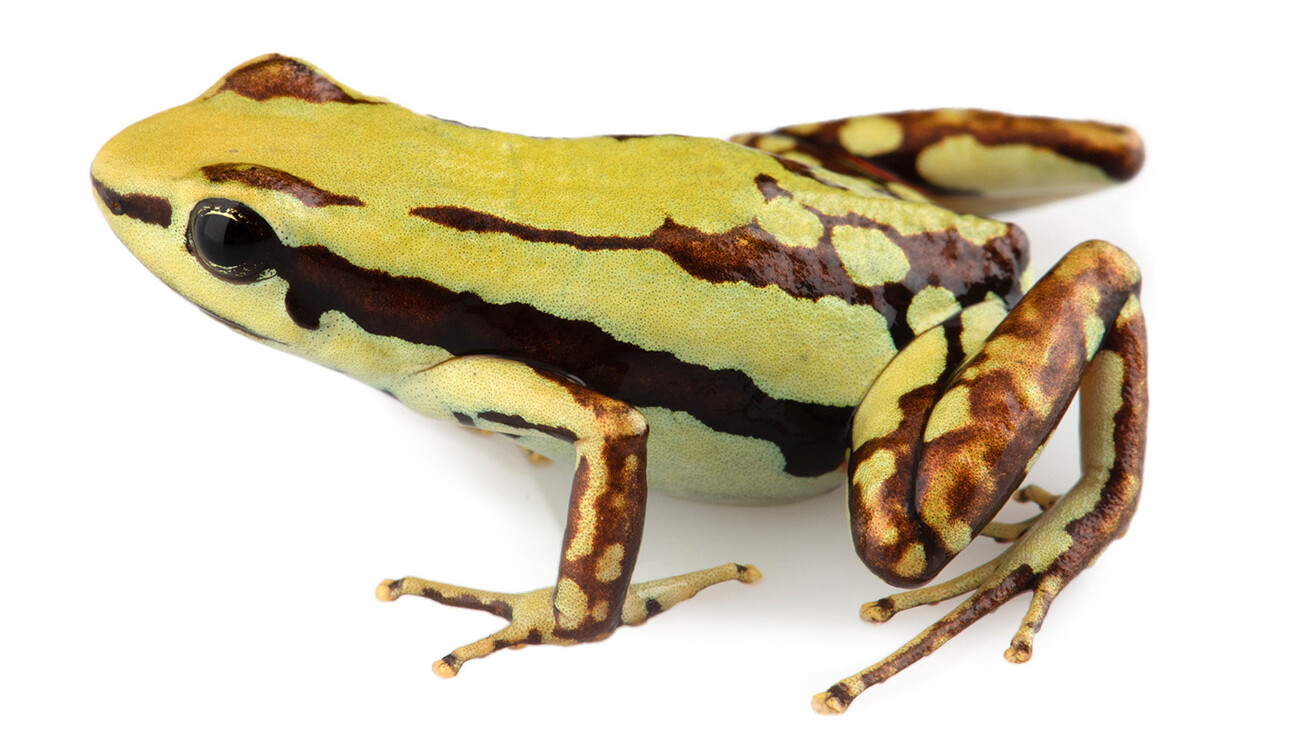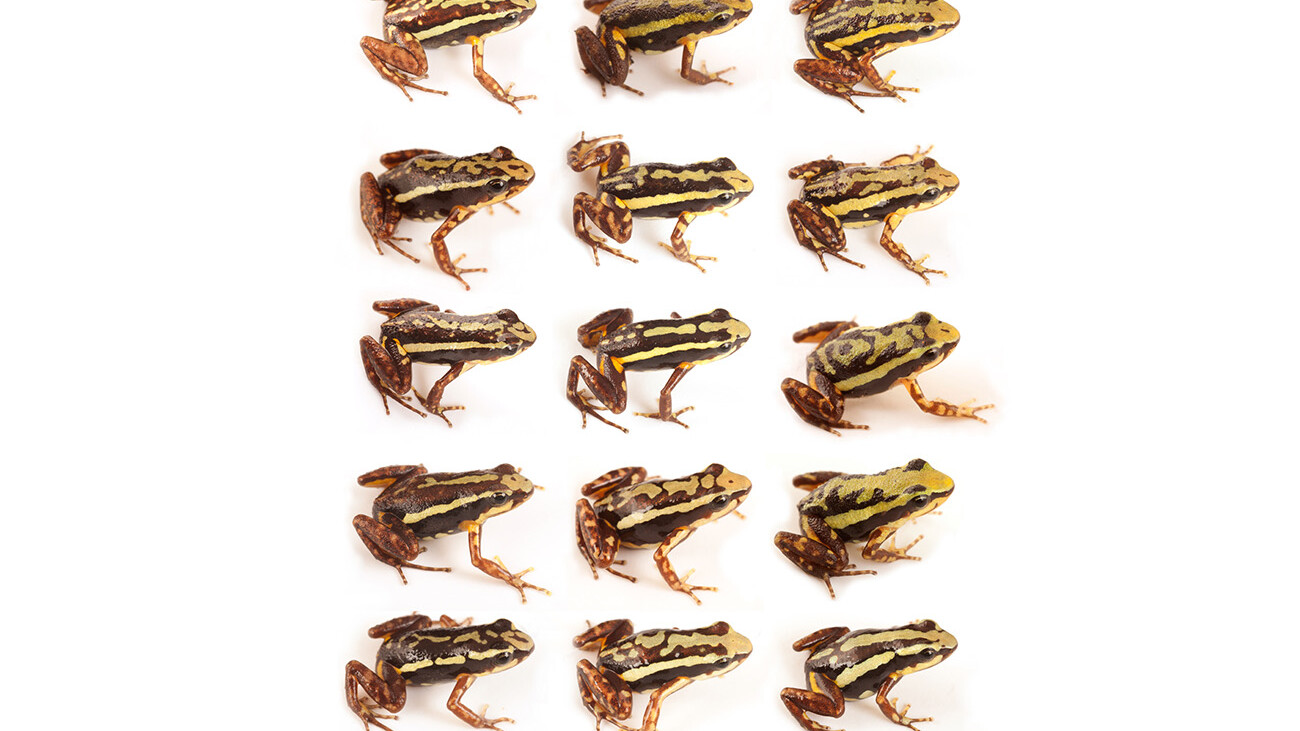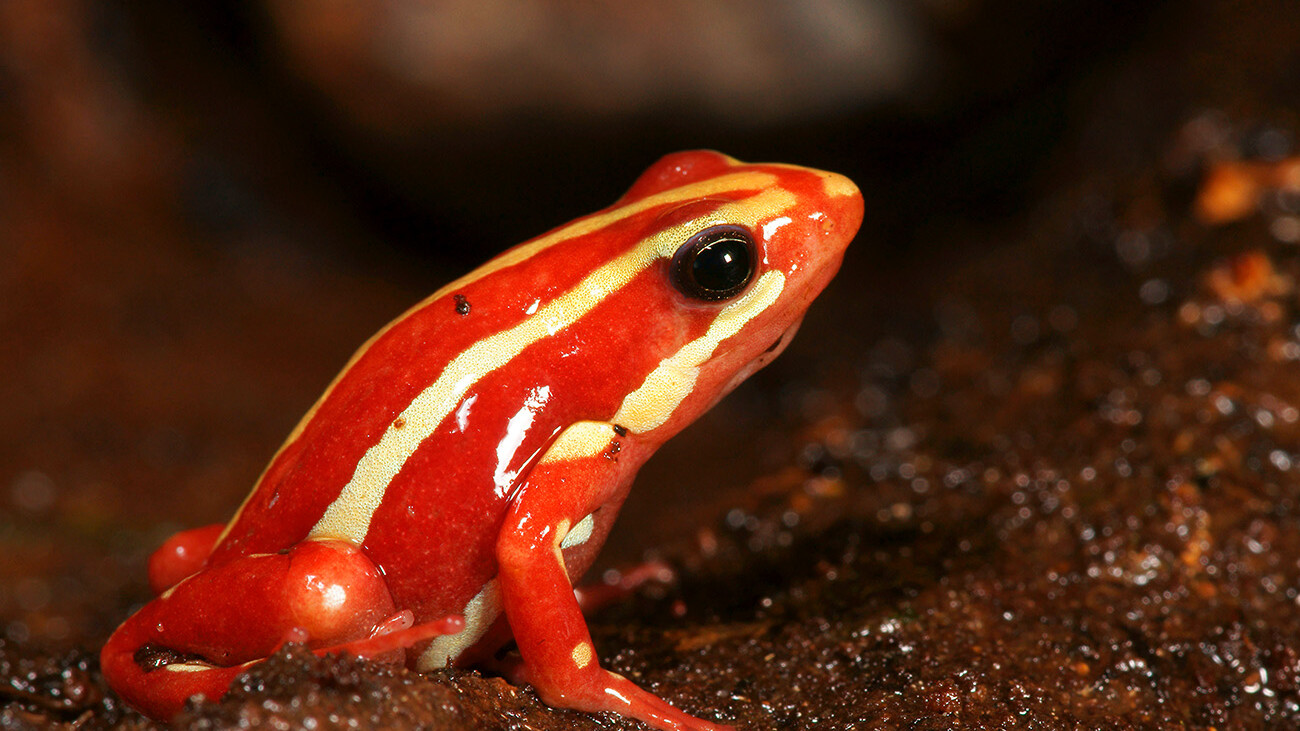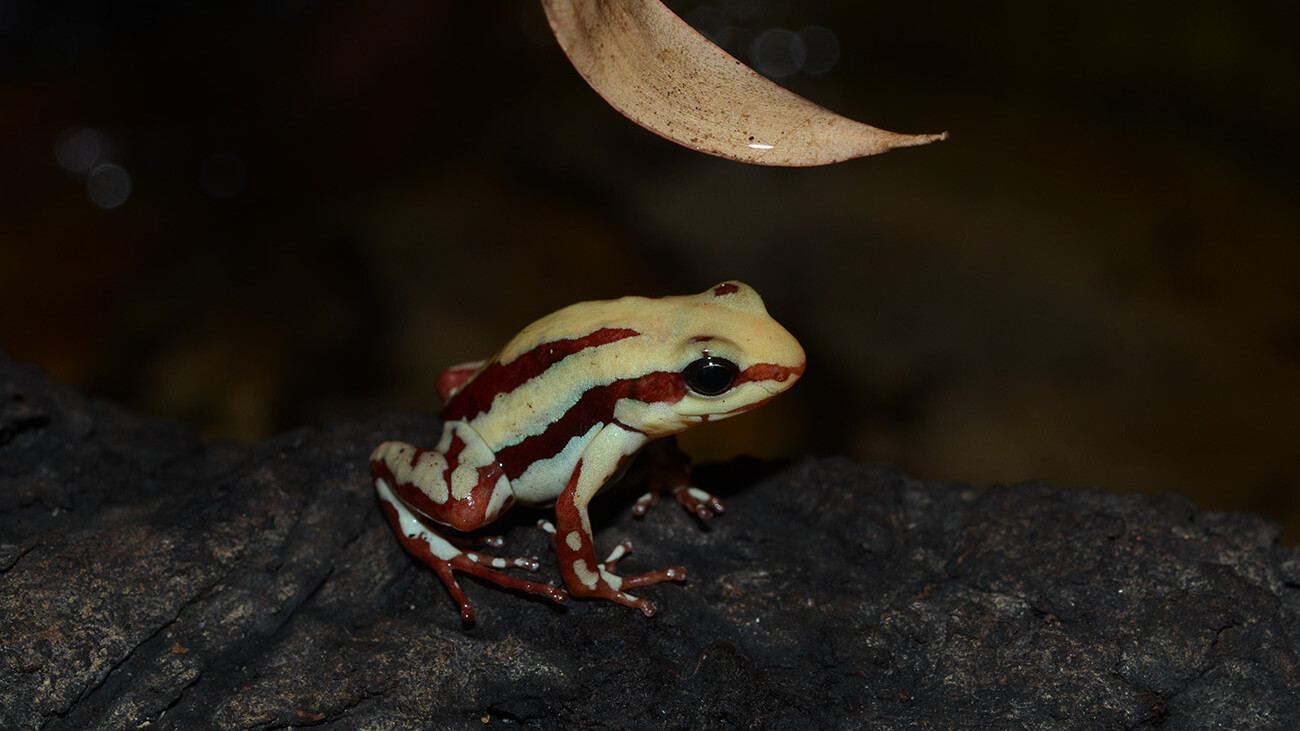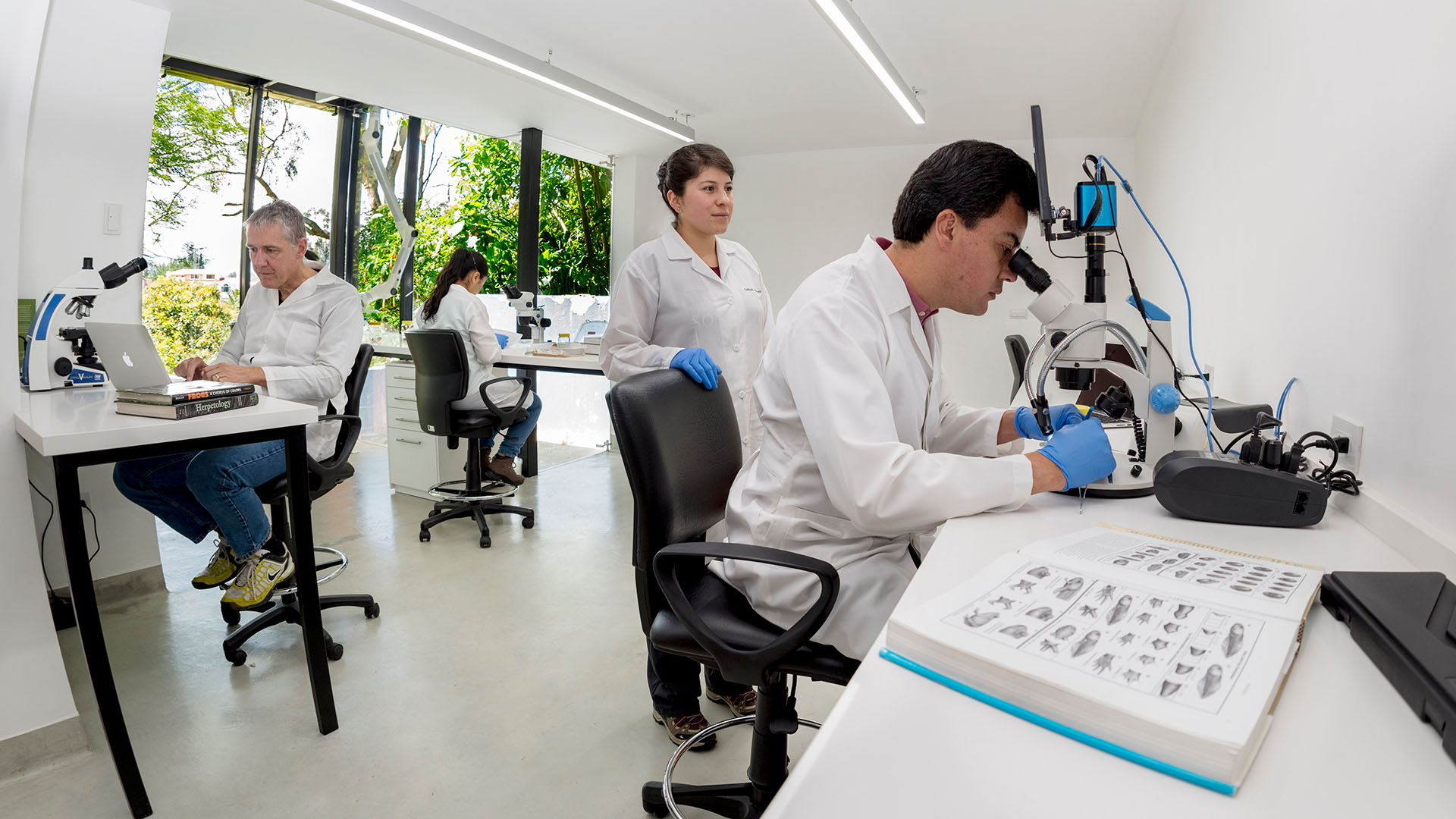Phantasmal Poison Frog
Epipedobates tricolor
Phantasmal Poison Frog
Epipedobates tricolor
CC goal
45 breeders
Status 11/2025
CC goal
320 animals
Status 11/2025
CC goal
45 breeders
Status 11/2025
CC goal
320 animals
Status 11/2025
You can make a mistake. The Phantasmal Poison Frog with the scientific name Epipedobates tricolor was once considered the guppy of frogs. The little frog, which is only around 2 centimetres long, is bred en masse in terrariums around the world. Then in 2004 it suddenly turned out that it wasn’t! It was actually a different frog, namely the closely related species Epipedobates anthonyi. At some point, the two were mixed up, causing a degree of confusion that lasted for decades. As a result, they were thought to be just one species until genetic analyses clarified the situation in 2004. And the surprising discovery that the distribution areas of the two in Ecuador are geographically separated by a whopping 200 kilometres.
Habitat conservation first – with the help of German zoos
Endangered to highly endangered
Now one could say: so what? The frogs in the terrariums are called anthonyi. Not as good a name as tricolor, where the tricolour resonates, but no drama. But because one frog with an already rather small distribution area has now become two with even smaller distribution areas, the endangered status of the species must be reassessed. Now the “true” Phantasmal Poison Frog is considered “endangered” (according to the IUCN Red List) or even “critically endangered” (according to the Ecuadorian Red List). The reasons for this are the usual ones: Deforestation of the rainforest where the species lives, pollution of streams by agrochemicals, lack of protected areas.
The diversity of a species
Better than morphine
“Okay, we just have one more highly endangered frog”, you could argue, “it doesn’t matter anymore”. But maybe it does. Because a substance has been discovered in the skin venom of Anthony’s Phantasmal Poison Frog that has the potential to be a pharmacological wonder drug: Epibatidine is the name of the substance, which is more effective as a painkiller than morphine. If it could be turned into a marketable drug, it could not only save many people a lot of suffering, but also represent a real economic factor: The potential was estimated at a potential turnover of 40 billion US dollars – and that was back in 1998.
"Cielito" means "little sky" in Spanish
@ Nature Picture Library, alamy
Conservation for Economic Reason
Biodiversity can therefore have very practical and economic benefits. Who knows what miracle cures were hidden in the skin toxins of other frogs that have already become extinct in recent decades in the course of the global amphibian crisis? You just never know beforehand. For this reason alone, we should try to save as many species as possible from extinction.
What is a separate species in the phantasmal poison frogs, what is a local variant, what is a purely individual difference? The biodiversity laboratory at the Centro Jambatu in Ecuador is researching this. @ Diego Acosta, Centro Jambatu
Evolutionary works of art
But that’s not the only reason. Because every species is an individual work of evolutionary art. What’s more, a species is not necessarily just one species. Our Phantasmal Poison Frog is the perfect example of this. The frogs look very different from place to place. So different that any unbiased observer would immediately say: “These are completely different frogs!” Diversity even within a species. And that’s what we want to preserve! After all, we don’t want all phantasmal poison frogs to look the same in a few decades’ time. That’s why Citizen Conservation looks after the local species from the San Jose de Tambo region. It bears the pretty name “cielito”. Which means “little sky” in Spanish. Because the many light-coloured dots on the dark frog are indeed reminiscent of a view of the starry sky. And we want to be able to enjoy that in the future too!
For breeders
Basic information on biology and breeding
The "true" Phantasmal Poison Frog is rarer, shyer and less productive than its well-known relative, Anthony's Phantasmal Poison Frog. A lushly planted rainforest terrarium from 60 x 60 x 40 cm is required for breeding. Temperatures all year round at 22–26 °C, night cooling to 19–22 °C, high humidity. The frogs eat small insects such as fruit flies.

